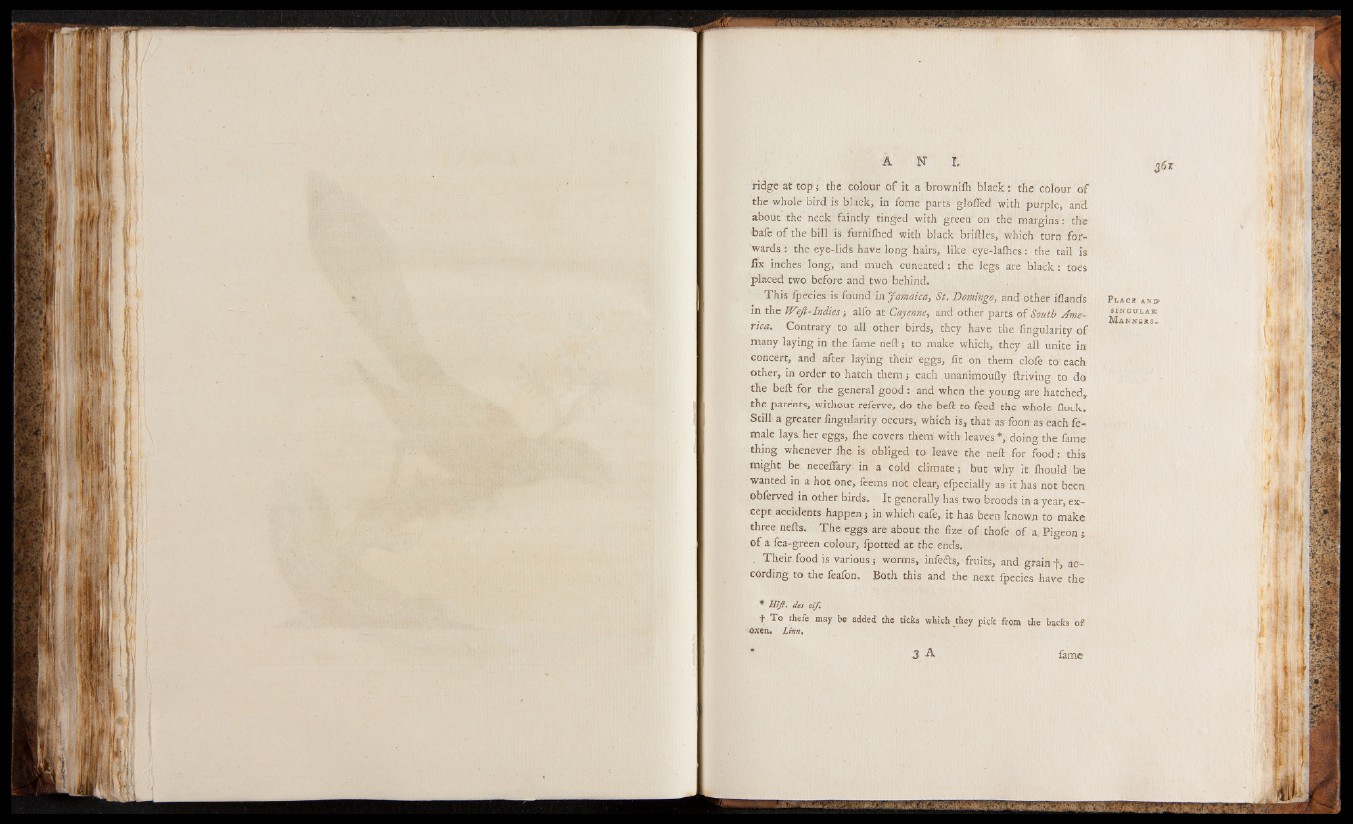
ridge at top; the colour of it a brownifh black: the colour of
the whole bird is black, in fome parts gloffed with purple, and
about the neck faintly tinged with green on the margins: the
bafe of the bill is furnifhed with black briftles, which turn forwards
: the eye-lids have long hairs, like eye-lafhes: the tail is
lix inches long, and much cuneated : the legs are black: toes
placed two before and two behind.
This fpecies is found in Jamaica, St. Domingo, and other i(lands
in the W?ft-Indies; alfo at Cayenne, and other parts of South America.
Contrary to all other birds, they have the Angularity of
many laying in the fame neft; to make which,, they all unite in
concert, and after laying their eggs, fit on them clofe to each
other, in order to hatch them; each unanimoufly ftriving to do
the belt for the general good: and when the young are hatched,
the parents, without referve, do the belt to feed the whole flock.
Still a greater Angularity occurs, which is, that as foon as each female
lays her eggs, Ihe covers them with leaves *, doing the fame
thing whenever ihe is obliged to leave the neft for food: this
might be neceflary. in a cold climate; but why it ihould be
wanted in a hot one, feems not clear, efpecially as it has not been
obferved in other birds. It generally has two broods in a year, except
accidents happen ; in which cafe, it has been known to make
three nefts. The eggs are about the iize of thofe of a. Pigeon ;
of a fea-green colour, fpotted at the ends.
. Their food is various; worms, infetfts, fruits, and grain f , according
to the feafon. Both this and the next fpecies have the
P la ck a nd *
s i n g u l a r
M a n n e r s ,
\4
* Hiß. des oif,
t 110 maf ke added the tiefes which they pick from the backs of sdxeiio Linn*
3 a fame
I I
m u